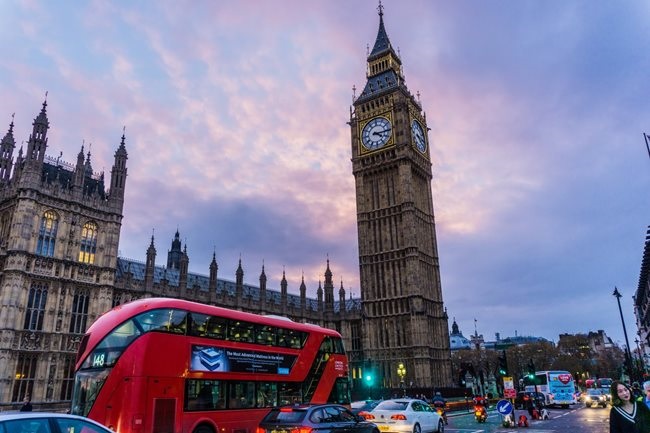ISABEL RUBIO ARROYO | Tungsteno
The tower of Big Ben (officially renamed Elizabeth Tower in 2012) is about the same height as 21 London double-decker buses stacked one on top of the other—some 96 metres—and houses the most famous clock on the planet. As well as being the setting for films and series such as Peter Pan, Friends, The Parent Trap and Minions, it has become one of the most characteristic symbols of London. As we enter the new year, we take a look at the construction and maintenance of this iconic clock, whose tower has begun to lean like the Tower of Pisa.
Two years to build the clock mechanism
An accidental fire in 1834 destroyed most of the old Palace of Westminster, which housed the British Parliament; only a few parts of the structure survived. The new design, devised by architect Charles Barry, retained these surviving medieval parts and included two towers. According to the website of the UK parliament: "The clock tower on Barry’s original proposal was not the 96-meter tall iconic building we know and love today." The young Gothic Revival architect Augustus Welby Pugin collaborated with Barry on the design and decorative elements of the New Palace of Westminster, and through his influence the clock tower gained in size and importance.
Constructing a clock of such magnitude was a great challenge. It took two years to complete its mechanism and cost £2,500 (the equivalent of about £285,000 today). The clock successfully began to tell the time in May 1859. To ensure that it worked perfectly, a telegraph cable was used to send the time on the chronometers at the Royal Observatory at Greenwich—the most accurate in the country—to the New Palace of Westminster.
The clock mechanism is regularly tested to ensure it works perfectly. Credit: UK Parliament
Big Ben as a symbol of freedom
The five bells of this iconic clock are struck by hammers from the outside. The largest bell, which is called Big Ben, weighs 13.7 tonnes. Its chimes, which can be heard more than eight kilometres away, have been silenced on rare occasions; for example, for maintenance work and in 1916 to protect the city from attacking German Zeppelins.
More than two decades later, during the Second World War, the bells played a different role. "The bells of the clock tower have been broadcast on the radio since New Year’s Eve 1923 and they became a symbol of freedom throughout the Second World War, raising the morale of people at home and of those fighting overseas," says the UK Parliament.
As the gigantic structure was too easily recognisable in the London sky, in 1939 the clock's lights were switched off until the end of the war in 1945. This did not prevent the Palace of Westminster from being hit by bombs 14 times. But it was not until decades later that it was discovered that the damage had been more severe than previously thought: "Modern surveying technology revealed fractures and structural damage which was not detectable by the methods available in the 1940s and 1950s."
The Palace of Westminster was hit by bombs during World War II. Credit: UK Parliament
Big Ben tower mimics that of Pisa
On top of all this damage, London's legendary clock tower has begun to lean like the Tower of Pisa. "I have heard tourists there taking photographs saying: ‘I don’t think it is quite vertical’ - and they are quite right," John Burland, emeritus professor at Imperial College London, tells the BBC. In theory, the tower is slowly sinking because of underground work that has been carried out in the area over the past few decades—on underground lines, car parks and the sewers.
The tilt accelerated between 2003 and 2011, increasing to 0.9 millimetres a year, compared to the long-term average rate of 0.65 millimetres a year, according to a report commissioned by the London Underground and the Parliamentary Estates Department. Burland told Reuters that if the process were to accelerate further, "we would have to look at doing something, but I don't think we need to do anything for a few years yet." At the current rate, engineers say, it would take 4,000 years to reach a tilt as exaggerated as the Tower of Pisa.
London's legendary clock tower has begun to lean like the Tower of Pisa. Credit: Pexels
While waiting to see how the tower's leaning progresses, a variety of maintenance projects have been carried out over in recent decades. Between 2017 and 2022, the Great Clock underwent "the most intensive conservation in its history," according to the UK Parliament. The Victorian mechanism of the clock was successfully reinstalled, the bells were tested and energy-saving LED lighting was fitted to the clock faces. During this conservation work, visits to its iconic clock tower have been paused. The UK Parliament, which expects to welcome visitors again in spring 2023, says: "Big Ben is coming back."
· — —
Tungsteno is a journalism laboratory to scan the essence of innovation
